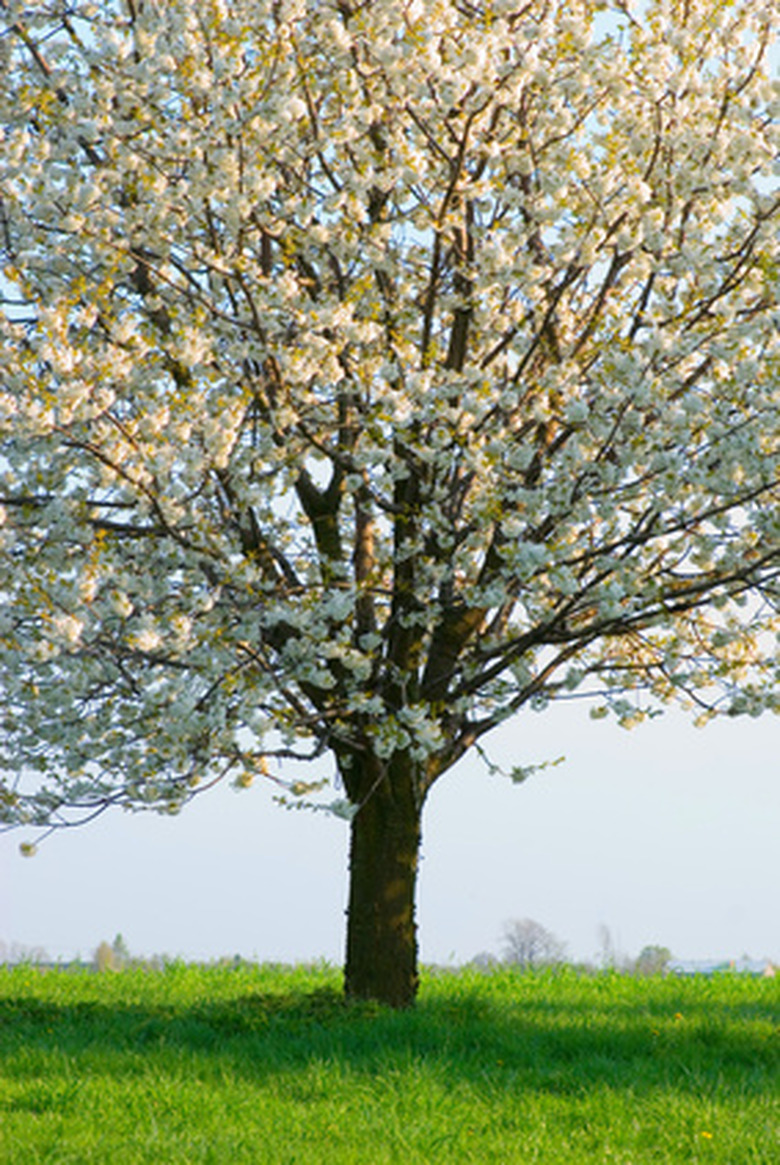How To Grow Cherry Trees In Oklahoma
Things Needed
- Young cherry tree
- Shovel
- Garden hose
- Mulch
- Pruning shears
Cherries are a very popular fruit with many different varieties grown across North America. The hot, dry climate and variable soil conditions in the southern central state of Oklahoma present some challenges for growing cherry trees. (See References 1) Visit your local nursery or garden center for advice on what varieties grow well in your area. Decide whether you want sour cherries for baking or sweet cherries for fresh fruit. Sour cherry trees are usually self-pollinating but most sweet varieties are cross-pollinators. Unless you plan to plant more than one tree, choose a self-pollinating sweet cherry cultivar such as Stella or Lapins. (See References 1)
- Cherries are a very popular fruit with many different varieties grown across North America.
- Sour cherry trees are usually self-pollinating but most sweet varieties are cross-pollinators.
Step 1
Purchase a good quality cherry tree from a reputable supplier. It should suitable for plant hardiness zones 6 or7 depending on what part of Oklahoma you live in. Buy a one or two year old tree and plant in either spring or fall. (See References 1)
Step 2
Choose an open area that gets plenty of sunlight. Pick a site with well-drained soil, if you are fortunate enough to have some. Many area of Oklahoma are covered with medium to heavy clays. Despite much advice to the contrary, it is best not to add sand or organics as an amendment when planting in clay. Roots may turn in to the richer soil of the planting hole rather than naturally spreading to form a good foundation for the tree. (See References 2)
- Purchase a good quality cherry tree from a reputable supplier.
- Despite much advice to the contrary, it is best not to add sand or organics as an amendment when planting in clay.
Step 3
Check the pH level of the soil at the planting site. Optimal pH for cherry trees is between 6.2 and 6.8. Lime can be added to lower pH while sulfur is used to raise it. Contact your local Oklahoma State University county extension office for help with soil testing and how to correct your pH level.
Step 4
Make your planting hole twice the width of the root ball or container. Dig the hole deep enough so that the base of the tree trunk will be an inch or two above grade after planting. Give the tree an inch or two of water when planted and water frequently, especially during hot weather.
- Check the pH level of the soil at the planting site.
- Make your planting hole twice the width of the root ball or container.
Step 5
Cover the area around the tree with 4 to 6 inches of mulch such as wood chips or shredded bark. This is especially important if you have clay soil as the mulch is an effective way to change the soil to loam. Do not let the mulch touch the trunk to avoid rot problems.
Step 6
Prune the cherry tree in the fall by removing dead wood and thinning out central branches to allow light into the interior. Choosing fertilizer for the tree will depends on your soil conditions. Consult your county extension office for advice based on the results of your soil test.
Tip
Take into consideration how close the tree will be to buildings, power lines and neighboring properties when planting. Multiple trees should be planted at least 20 feet apart.
Warning
Call Oklahoma One-Call at least 48 hours before you dig to locate underground services that may interfere with the planting site.
